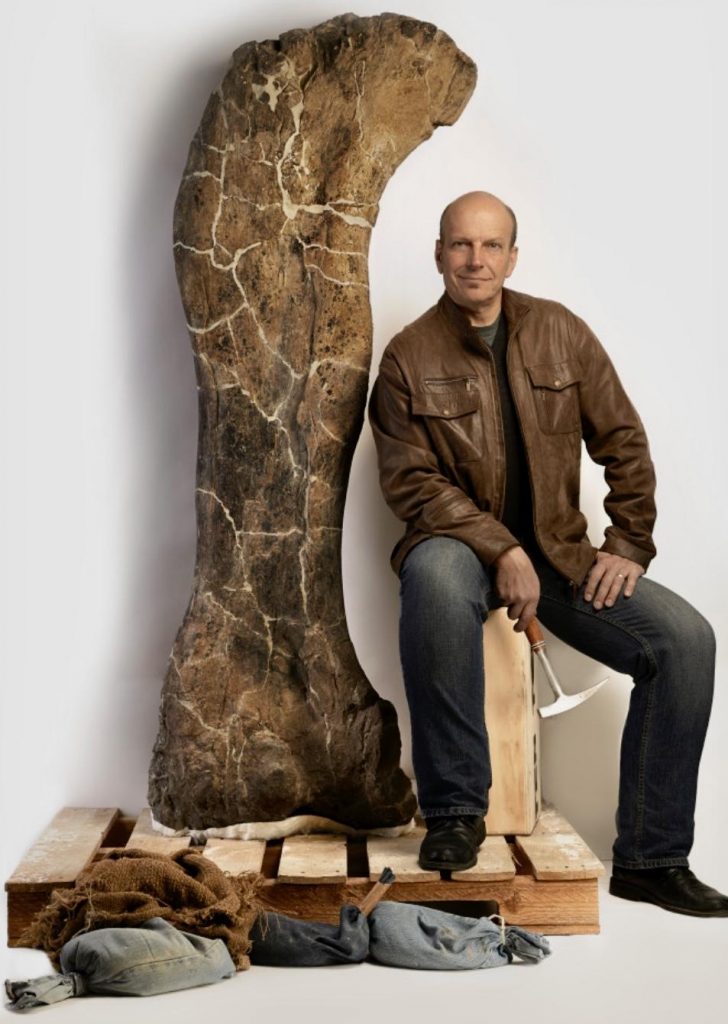In the day, how big could the real monster dinosaurs get? Renowned paleontologist Ken Lacovera, best known for his discovery in 2005 of Dreadnoughtus shrani, a 65-ton, 77-million-year-old Titanosaur unearthed in Patagonia, can tell you.
Dreadnoughtus is one of the largest land animals ever to have roamed the Earth. One wonders what 1960s fictional television character Fred Flintsone would have thought had he encountered such a beast. Dread (pun intended) might be an appropriate word.
We recently caught up with Lacovera, 64, for thoughts on his “mammoth” discovery two decades back. Following are edited excerpts from a longer conversation.
Jim Clash: What were you thinking when you first unearthed Dreadnoughtus?
Ken Lacovara: When I found a 1.9-meter [6’ 3”] femur bone in the desolate badlands of Patagonia, I suspected I’d discovered a new species of colossal plant-eater. That evening, under the blazing southern stars, I stared at the first few of the 145 bones we’d eventually unearth, wondering: “Who are you? Where did you come from? What happened to you?” And, more practically, “How am I going to get you out of here?” Our site was accessible only by raft and horse.
Clash: What have been the implications of that find for the science of paleontology?
Lacovara: At 65 tons – nine times the mass of a T. rex – you’d think Dreadnoughtus was near the upper limit for terrestrial animals. But bone analysis revealed it was still growing fast, even at its death!
Clash: You’re also a noted jazz drummer. Was there a moment when you had to choose one path over the other?
Lacovera: Yes. After a stint at the Golden Nugget in Atlantic City [New Jersey], I was offered a Broadway gig in New York. But science had already gripped me, ignited largely by Carl Sagan’s “Cosmos,” so I chose graduate school. In a cosmic bit of serendipity, years later my first expedition was funded by Ann Druyan, Sagan’s widow. Music remains part of my life, though. I still carry sticks when I travel, and can usually find a spot on stage to sit in.
Clash: You recently cut ribbon on a new museum, correct?
Lacovera: Over the past two decades, I’ve gone on to excavate thousands of fossils in southern New Jersey of all places, opening a window on the final chapters of the dinosaur age. To share these discoveries, we have opened the Edelman Fossil Park & Museum, a carbon net-zero architectural wonder with state-of-the-art exhibits, gardens, nature trails and a quarry where visitors can dig for fossils themselves. How about that?

